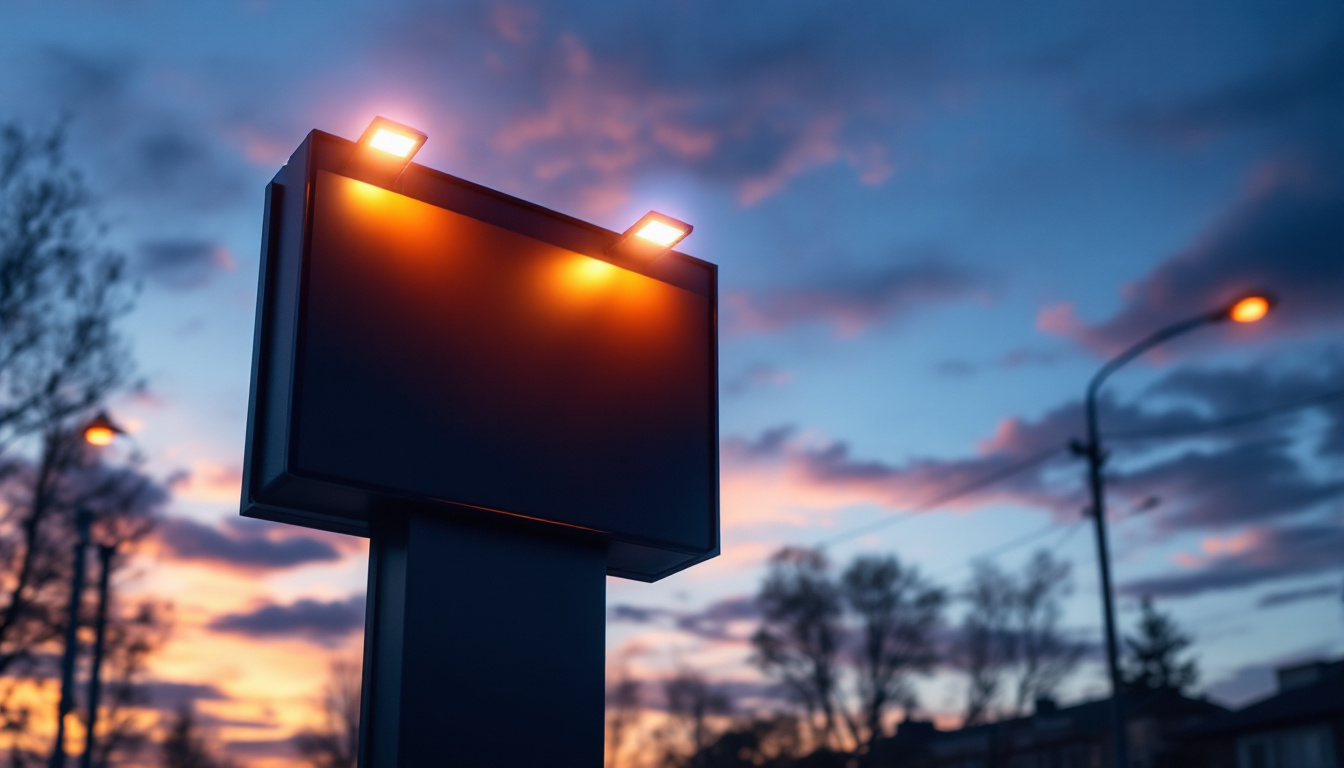
In the realm of commercial and retail spaces, effective signage is crucial for attracting customers and enhancing brand visibility. However, the impact of signage can be significantly amplified through proper illumination. This guide aims to equip lighting contractors with essential knowledge and insights into the nuances of signage illumination, ensuring that they can provide optimal solutions for their clients.
Signage serves as a beacon for businesses, guiding potential customers and conveying vital information. However, without proper lighting, even the most creatively designed signs can go unnoticed. Illumination not only enhances visibility but also plays a pivotal role in branding and aesthetics.
One of the primary functions of illuminated signage is to enhance visibility, especially during nighttime or in low-light conditions. Well-lit signs can significantly improve safety by ensuring that pedestrians and drivers can easily identify businesses. This is particularly important in urban areas where competition for attention is fierce.
Illumination adds an extra layer of sophistication to signage, reinforcing brand identity. Different lighting techniques can evoke various emotions and reactions, making it essential for contractors to understand how light interacts with colors and materials. For instance, warm lighting can create a welcoming atmosphere, while cooler tones may convey professionalism.
With an increasing focus on sustainability, energy-efficient lighting solutions have become a priority for many businesses. Lighting contractors must stay informed about the latest technologies and practices that not only enhance illumination but also reduce energy consumption. This not only benefits the environment but can also lead to significant cost savings for clients.
There are various methods to illuminate signage, each with its own advantages and applications. Understanding these types will allow lighting contractors to tailor their solutions to meet specific client needs.
Backlit signs are illuminated from behind, creating a glowing effect that enhances visibility. This method is particularly effective for channel letters and box signs. The light source, often LEDs, is placed behind a translucent material, allowing light to diffuse evenly. Contractors should consider the thickness and material of the sign face to achieve the desired brightness and color.
In contrast to backlit signage, front-lit signs have light sources positioned in front of the sign. This method is commonly used for illuminated channel letters where the face of the letters is lit. While this technique can be visually striking, it may not be as effective in low-light conditions compared to backlit options. Contractors should assess the location and visibility of the sign when recommending this approach.
Edge-lit signage utilizes LED strips along the edges of a sign to create a halo effect. This technique is particularly popular for modern and minimalist designs. The light is directed towards the sign face, creating an even glow that can be both elegant and eye-catching. Contractors must ensure that the materials used are suitable for edge lighting to prevent hotspots and ensure uniformity.
With advancements in lighting technology, contractors have a plethora of options to choose from. Selecting the right technology is crucial for achieving the desired effect while maintaining efficiency and longevity.
LEDs have revolutionized the signage industry due to their energy efficiency and longevity. They consume significantly less power than traditional lighting options, such as incandescent or fluorescent bulbs, while providing a bright and consistent output. Additionally, LEDs are available in various colors, allowing for creative flexibility in design.
While fluorescent lighting is less common in modern signage, it can still be a viable option for certain applications. Fluorescent tubes can provide even illumination for larger signs, but they may not offer the same energy efficiency or lifespan as LEDs. Contractors should weigh the pros and cons based on the specific requirements of the project.
Neon signs have a unique aesthetic appeal that can evoke nostalgia and attract attention. While they are not as energy-efficient as LEDs, they provide a distinctive glow that can enhance branding. Contractors should consider the maintenance and installation challenges associated with neon lighting, as well as the specific market demand for this style.
Effective signage illumination goes beyond just selecting the right lighting technology. Several design considerations must be taken into account to ensure that the final product meets client expectations and enhances the overall visual impact.
The color temperature of the lighting can significantly influence the perception of the signage. Warmer tones (around 2700K to 3000K) create a cozy and inviting atmosphere, making them suitable for restaurants and retail stores. Cooler tones (above 4000K) convey a more modern and professional look, ideal for corporate offices and tech companies. Understanding the brand’s identity and target audience is essential when selecting the appropriate color temperature.
Even light distribution is crucial for effective signage illumination. Uneven lighting can create hotspots or shadows, detracting from the sign’s overall appearance. Contractors should consider the placement of light sources and the angles at which they are directed. Utilizing diffusers or reflectors can help achieve a more uniform light spread.
The size and placement of the sign play a significant role in determining the type and intensity of illumination required. Larger signs may need multiple light sources to ensure adequate brightness, while smaller signs may only require a single source. Additionally, the sign’s location—whether it’s mounted on a building facade or hanging from a ceiling—will influence the lighting design. Contractors should conduct a thorough site assessment to make informed recommendations.
Proper installation is critical to the success of any signage illumination project. Lighting contractors must adhere to best practices to ensure safety, functionality, and longevity of the installation.
Before installation, contractors should assess the electrical requirements of the chosen lighting technology. This includes determining the voltage, wattage, and circuit capacity necessary to support the lighting system. Proper wiring and connections are essential to prevent electrical hazards and ensure reliable performance.
For outdoor signage, weatherproofing is a vital consideration. Contractors should select materials and fixtures that can withstand environmental elements, such as rain, snow, and UV exposure. Sealing connections and using weather-resistant enclosures will enhance the durability of the installation, reducing maintenance needs over time.
Once the installation is complete, thorough testing is essential to ensure that all components function as intended. This includes checking for even illumination, proper color rendering, and any potential flickering. Additionally, contractors should provide clients with maintenance guidelines to ensure the longevity of the signage illumination system. Regular inspections and timely replacements of faulty components can prevent costly repairs and downtime.
Lighting contractors must be aware of regulatory compliance and safety standards related to signage illumination. Adhering to these regulations not only ensures the safety of the installation but also protects the contractor from potential liabilities.
Before commencing any signage project, contractors should familiarize themselves with local codes and regulations regarding signage illumination. This may include restrictions on brightness levels, light pollution, and specific requirements for electrical installations. Obtaining the necessary permits is crucial to avoid fines and ensure a smooth installation process.
Compliance with safety standards, such as those set by the National Electrical Code (NEC) and Underwriters Laboratories (UL), is essential for ensuring the safety of both the installation and the public. Contractors should stay informed about the latest safety regulations and incorporate them into their practices to minimize risks.
The field of signage illumination is continually evolving, with new technologies and trends emerging regularly. Lighting contractors should stay abreast of these developments to remain competitive and provide cutting-edge solutions to their clients.
Smart lighting technology is gaining traction in various industries, including signage. These systems allow for remote control and automation, enabling businesses to adjust lighting based on time of day or specific events. Contractors should explore the integration of smart lighting solutions into their offerings, providing clients with enhanced flexibility and control.
As consumer preferences shift towards more engaging experiences, dynamic and interactive signage is becoming increasingly popular. This includes digital displays that can change content based on audience engagement or environmental factors. Contractors should consider the technical requirements and installation challenges associated with these systems, ensuring they can deliver innovative solutions.
With a growing emphasis on sustainability, lighting contractors should prioritize eco-friendly practices in their projects. This includes using energy-efficient technologies, sustainable materials, and environmentally responsible disposal methods. Clients are increasingly seeking out contractors who align with their values, making sustainability a key differentiator in the market.
Signage illumination is a critical aspect of effective branding and customer engagement. Lighting contractors play a vital role in ensuring that signage is not only visible but also aesthetically pleasing and energy-efficient. By understanding the various types of illumination, design considerations, installation best practices, and emerging trends, contractors can provide exceptional service to their clients.
As the industry continues to evolve, staying informed and adaptable will be key to success. Embracing new technologies, prioritizing sustainability, and adhering to safety standards will position lighting contractors as leaders in the field of signage illumination. Ultimately, the goal is to create stunning, effective signage that not only attracts attention but also enhances the overall customer experience.
Ready to elevate your signage illumination projects with the highest quality lighting solutions? At LumenWholesale, we provide lighting contractors with spec-grade lighting products that combine quality, affordability, and convenience. Say goodbye to inflated markups and hello to our unbeatable wholesale prices, extensive selection, and the reliability that your projects deserve. Plus, enjoy the ease of bulk buying with free shipping, ensuring you get the best value without any hidden fees. Enhance your service offerings and delight your clients with the superior performance of our lighting products. Wholesale Lighting at the Best Value is just a click away. Experience the LumenWholesale difference today!

Discover essential tips to prevent costly errors when using LED 8 bulbs in your lighting projects.

Discover the essentials of wall-mounted ceiling fans with our comprehensive guide tailored for lighting contractors.

Discover how exterior light boxes can transform your lighting contracting business.

Discover how lighting contractors can enhance their business by tapping into the American outlets market.